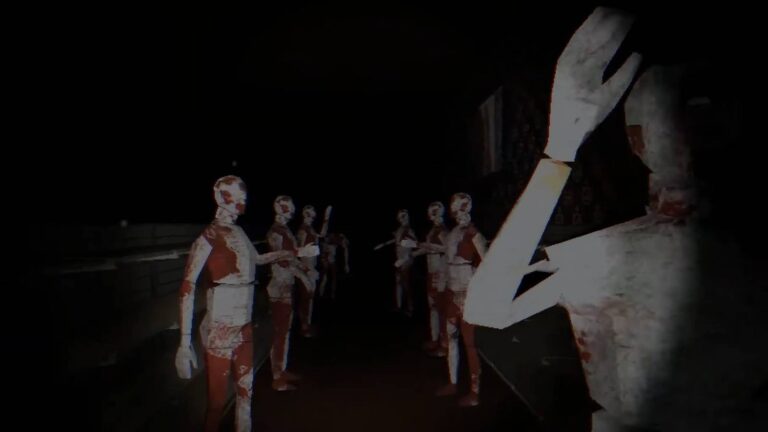
Open-world games are some of the most popular gaming experiences out there, and it’s easy to see why. They give players the most bang for their buck by allowing them to explore a vast world stuffed with content. Some open-world games have better exploration options than others, but the point remains.
On the horizon, there are a few big open-world games coming out in 2026, like Grand Theft Auto 6 and The Blood of Dawnwalker. They should have the following features to make their worlds more immersive. Open-world games beyond this point should also take note. Not every open-world game has to be the same, but it would make for a more compelling experience if these features were involved.
Worlds Without Borders
And Make The Environments Varied And Interesting
Final Fantasy 7 Rebirth is a great game with fantastic and scenic open-world areas to explore. However, there are gating issues as the game is very story-oriented. The same is true for a more recent open-world game, Borderlands 4, which is more open than Final Fantasy 7 Rebirth, but it also has some gating problems. Again, these games are some of the best out there, but open-world games and the developers who make them should strive to achieve true open-world environments without much gating, if possible. Also, these worlds should be filled with interesting things to see.
As fun as it is to explore Forspoken thanks to the speed of the protagonist, Frey, there isn’t much to see or do. Some standout examples of open-world games where the player is free to do whatever they want almost from the start include The Elder Scrolls 5: Skyrim and The Legend of Zelda: Breath of the Wild. Assassin’s Creed Shadows and Xenoblade Chronicles X do have level gating to prevent players from getting too far, but these high-level areas are still accessible if players want to risk the danger. True open-world games are the main goal, but adding things like day and night cycles, along with seasons, would also be a plus.
Multiple Traversal Methods
From Climbing To Gliding
The Legend of Zelda: Breath of the Wild changed the open world scene in a lot of ways when it launched alongside the Switch in 2017. It added climbing mechanics along with a stamina meter to push players to their limits. Once a huge cliff was scaled, players could then jump off and glide away. Some games have used the gliding method since then, like Rise of the Ronin. Other games have added full flight into their open-world environments, like Anthem and Hogwarts Legacy.
The original Marvel’s Spider-Man let players climb buildings and swing around, and both mechanics felt natural. In Marvel’s Spider-Man 2, the suits got gliding upgrades. Beyond climbing and gliding, there should be some sort of mount or vehicular traversal too, which many games have, from horses in Ghost of Tsushima to driving the digi-runners in Borderlands 4. It seems like a no-brainer to add mounts of vehicles, but there are some games, like Fallout 4, that don’t have good traversal upgrades beyond a player’s own two feet.
Quests That Matter
Or Compelling Stories
An open-world game is only as compelling as the people who inhabit it. An open-world game could be filled with quests, but they may not be interesting. The Witcher 3: Wild Hunt was one of the first open-world games to push side quests to a new level, making every NPC matter. The story is equally compelling, giving players plenty to do if they so choose. Other great examples include Avowed and Final Fantasy 7 Rebirth.
If the side quests aren’t good, then the story should at least be compelling. Nailing both is ideal, but not every game can be perfect, and some excel in certain aspects. For example, Deadly Premonition is a divisive open-world game that is not that compelling to explore. However, the game’s NPCs are memorable and quirky, and the overall story is THE reason to play. So, developers need to find a good balance in future open-world games.
Character Customization
And Crafting
Players love character customization in their games, and the more the better. Baldur’s Gate 3 might have some of the best in recent memory, as players can choose their gender, race, looks, class, and so much more. In Biomutant, players can create a little critter from scratch, and each one will look different than the last. In single-player-driven games, it makes sense that not every character can be fully customizable, but there are ways to add some flavor to storied characters.
Donkey Kong Bananza, for example, allowed players to change the fur color of Donkey Kong and adorn him with outfits along with his partner, Pauline. Any way players can customize their characters will be seen as a positive. Crafting is an accompanying feature, and not every game has to be a Palworld or Minecraft situation with base-building. However, little things like weapon crafting, akin to the mods in Fallout 4, can be enough to satiate the creative minds of players.
Difficulty Settings
And Monsters That Are Terrifying
This goes for all games beyond open-world experiences, but they should have difficulty settings. A good recent example that has them is Death Stranding 2: On the Beach, which is needed because that game can be brutal without them to experience the true courier sensation of walking through mountains and deserts. Assassin’s Creed Shadows also has difficulty levels, although the leveling mechanics still make things tough even on the easiest setting. Elden Ring is an open-world game that does not have difficulty settings, which should not be that surprising since it is a FromSoftware game and a Soulslike. The point of Soulslikes is to accept the challenge attached, but there are some that do have difficulty options or assist modes like Stranger of Paradise: Final Fantasy Origin.
That’s not an open-world example, but difficulty options in all games should be something developers strive toward. It goes both ways, as casual players will want easy modes while hardcore players will want to push themselves to the absolute limit. That said, even on the easiest setting, there should be sections in each open-world that are truly terrifying, like seeing enemies that far out-level players from the monsters in Monster Hunter Wilds to the Colossi in Shadow of the Colossus. It’s another example of trying to find the right balance between mechanics and visuals to create an engaging world brimming with life.
Save Anytime, Anywhere
Keep Data Safe
Another simple mechanic that open-world games should have is the ability to save anywhere, anytime, or at least the nearest opportunity within reason. For example, players can do this in Death Stranding 2: On the Beach except in story situations or if there are enemies nearby, which makes sense. The Elder Scrolls 5: Skyrim and Fallout 4 are two other great examples, and Bethesda games have generally been good about manual saves. It’s great to be able to stop playing at any point and then return right where players left off.
A mismanaged example is Borderlands 4. That game saves all the time, but players cannot stop what they are doing, exit, and then return exactly where they left off. They also can’t manually save where they want to, which is an important feature for many games, in case players want to return to that moment much later. It could be to relive the experience, like a boss fight, or to try out different dialogue options. To Borderlands 4’s credit, it does give players the ability to replay most missions, which is another feature that open-world games should get. First and foremost, though, a good save system is a must.









